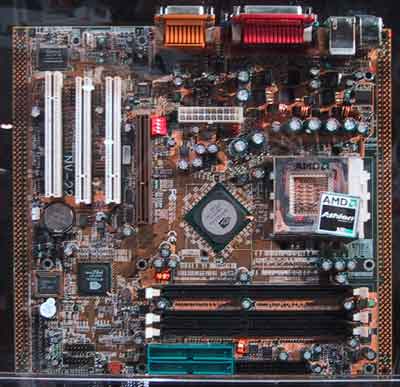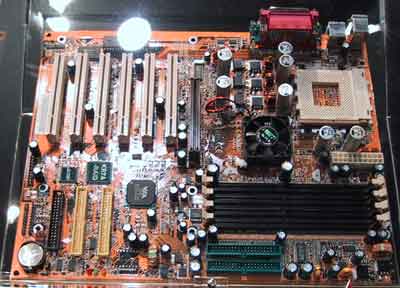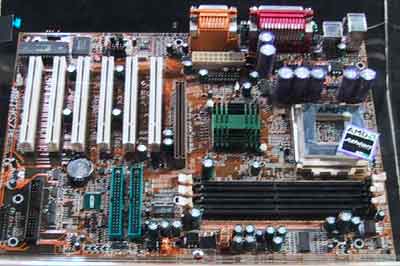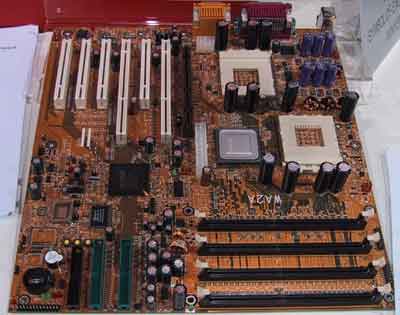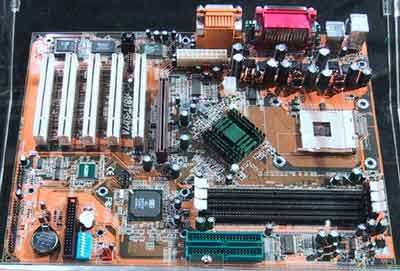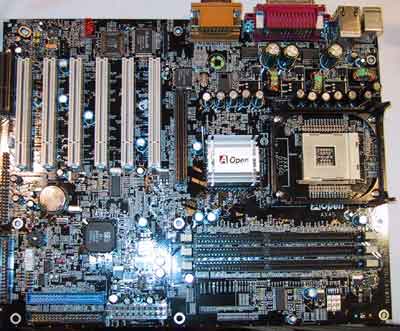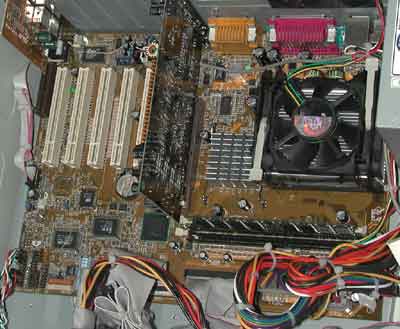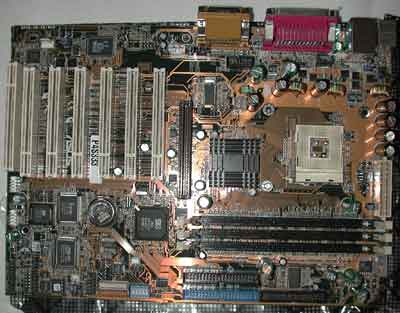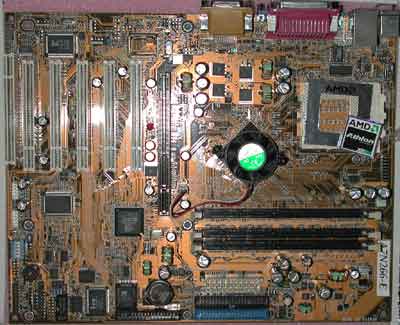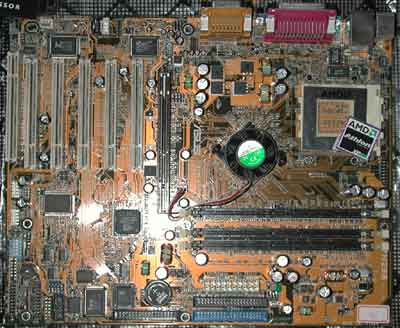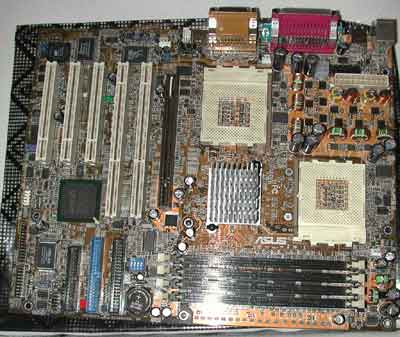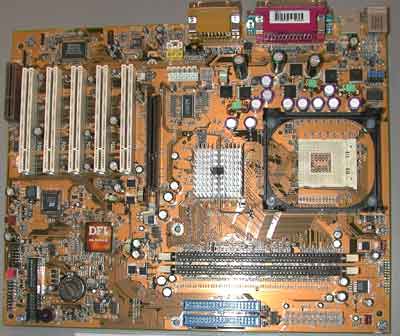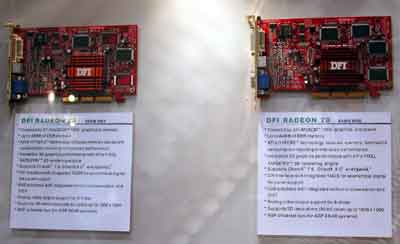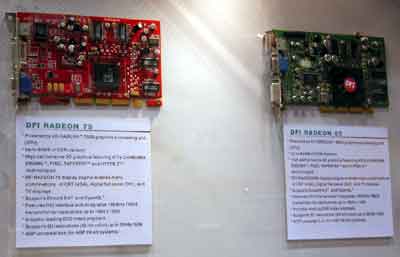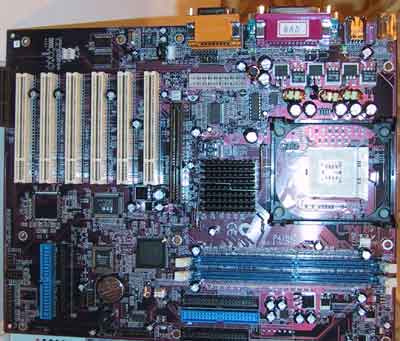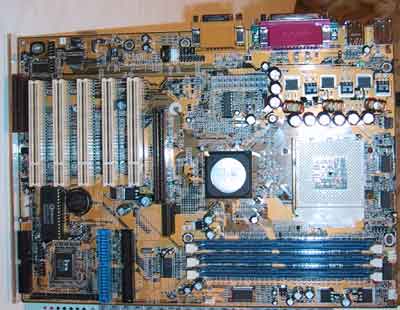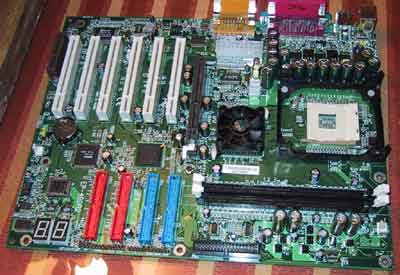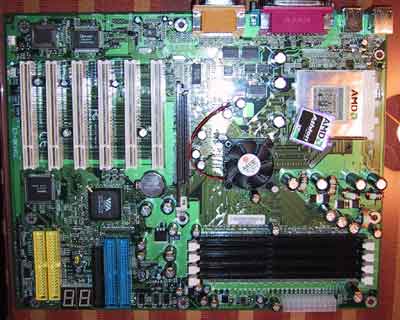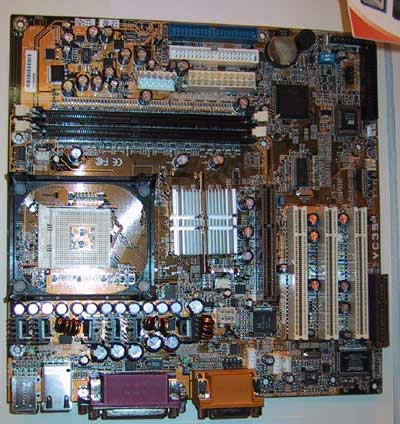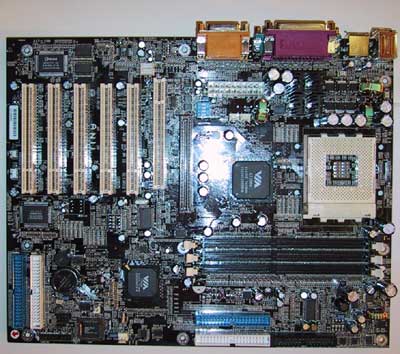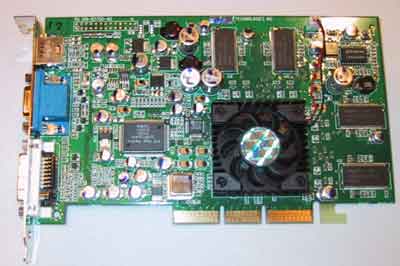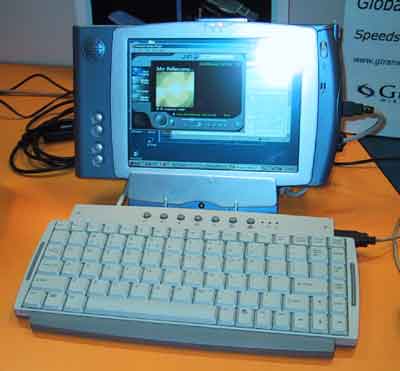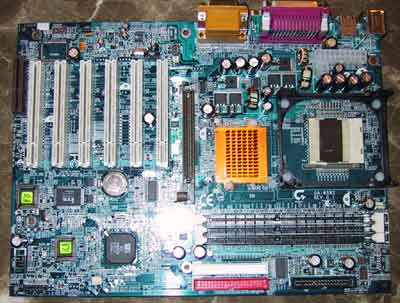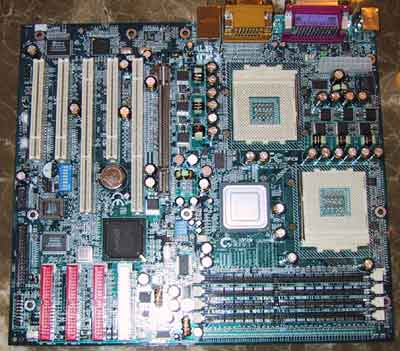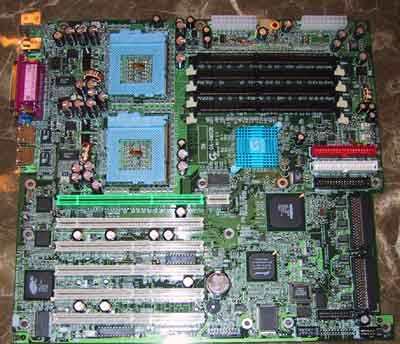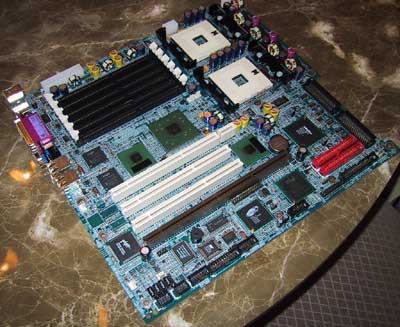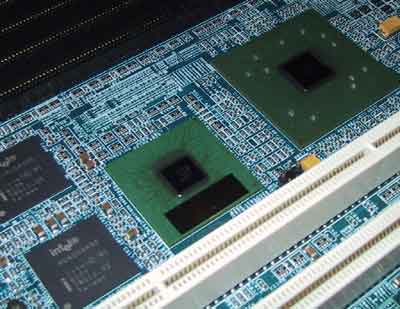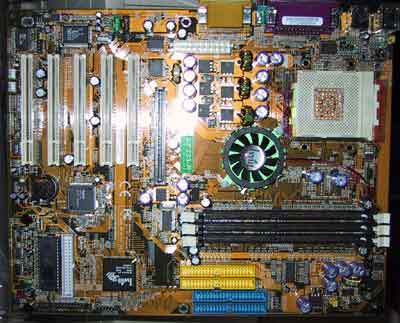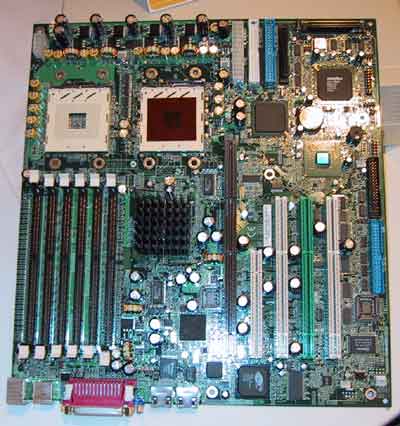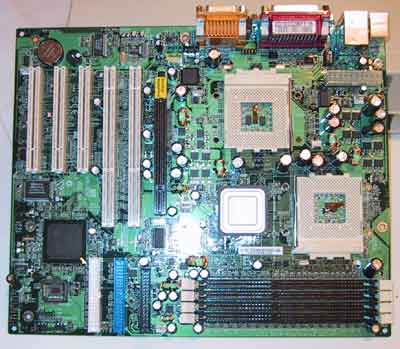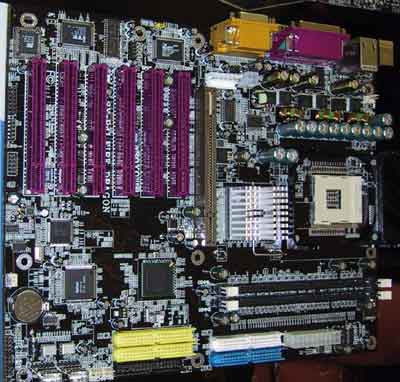
Original Link: https://www.anandtech.com/show/852
Motherboards in 2002: Preview from Comdex
by Anand Lal Shimpi on November 19, 2001 12:00 PM EST- Posted in
- Motherboards
On Tuesday we brought you our initial coverage of Fall Comdex 2001. While it's definitely the slowest Comdex we have seen since we started covering the show three years ago, we were able to run into some interesting things during our trip to Vegas.
The recent economic decline and increases in Comdex fees (a large presence at Comdex can easily set a company back over $500,000) have directly contributed to the decline in attendance. Fears surrounding another terrorist attack prompted increased security at this year's show which made getting on the floor for regular attendees a little more difficult than usual.

Clearly absent from this year's show floor were the Taiwanese motherboard manufacturers who almost collectively decided that it simply wasn't worth it to have a presence on the floor. With the exception of ABIT and DFI, most motherboard manufacturers found themselves in hotel suites in the Venetian, the Mirage and the Bellagio resorts among other locations along the Vegas strip.
Our second day at Comdex was spent hotel-hopping, visiting all of the motherboard manufacturers and getting an idea for exactly what we should expect to see out of Taiwan as we head into 2002.
General Expectations
What was most interesting about this year's Comdex was that motherboard manufacturers were prominently displaying Intel Pentium 4 solutions, much more so than they were showcasing Athlon motherboards. With the release of the SiS 645 and the pending release of Intel's 845 chipset with DDR SDRAM support, motherboard manufacturers are eagerly embracing Intel's Pentium 4 processor.
At the same time, VIA's P4X266 chipset has all but vanished from the show floor. Most motherboard manufacturers were very hesitant to display their P4X266 boards and generally stated that they would not be manufacturing any P4X266 based solutions. Their reasoning is very easy to understand; with the SiS 645 being the cost effective Pentium 4 DDR solution and Intel's 845 (w/ DDR support) being the more expensive yet still mainstream solution, most manufacturers are not willing to get on Intel's bad side by supporting a controversial (or as Intel would say, illegally produced) chipset that offers no real advantages over the aforementioned two.
On the Athlon side of things, the VIA KT266A chipset is clearly the chipset of choice for the majority of the manufacturers we visited. Not only is it a very affordable solution but the Taiwanese manufacturers have had a lot of experience with VIA's Athlon line and are quite pleased with the performance. Unfortunately NVIDIA's nForce has not been met with such great enthusiasm by motherboard manufacturers. The five launch partners for the nForce are still dealing with various issues in their designs in spite of the fact that NVIDIA's reference boards have been running just fine. One manufacturer even told us that they weren't sure if their nForce board would hit before the end of the year.
We were also lucky enough to run into a sample of Intel's Plumas chipset; their first dual-channel DDR solution that will debut next year for use with the 0.13-micron Xeon processors. We'll let you do the legwork as far as finding the board goes, but it's somewhere in this article :)
ABIT
ABIT was one of the very few manufacturers to continue to have a presence on the Comdex show floor. Their booth wasn't anything extravagant but at the same time it definitely wasn't cheap to setup. The mentality behind their decision was that no one will ever see you if you're not easily found, hopefully it worked out for the best for them.
As you'll remember from our Computex 2001 coverage, ABIT was one of the five launch partners for NVIDIA's nForce chipset. ABIT's NV-22 will be sampling to OEMs before the end of the year but ABIT has yet to make the final decision as to whether or not they will release the board into retail channels. Currently ABIT's roadmap actually places the nForce chipset below the VIA KT266A in terms of performance and reliability; while this may change as time goes on it is clearly an indication that the launch of the nForce chipset has not gone as smoothly as originally planned.
Much more interesting to AnandTech readers will be ABIT's first KT266A motherboard, the KR7A-RAID. The KR7A-RAID brings to the table everything that you're used to seeing from ABIT plus a total of four DIMM slots. This is a very difficult thing to accomplish from an engineering standpoint yet ABIT has put in the extra effort to guarantee their board's operation with all four DIMM slots populated. We'll test this functionality for sure as soon as the board arrives in our San Jose motherboard testing lab next week.
Here we have the KS7 which uses the upcoming SiS 745 chipset. The SiS 745 chipset is very similar to the 735 with official support for DDR333 SDRAM. For the Athlon, without an equivalent increase in FSB frequency, the move to DDR333 SDRAM shouldn't provide a tangible performance increase making the 745 nothing special.
ABIT also had a board based on AMD's 760MPX chipset which as you will recall is an updated version of the 760MP chipset launched in June. The MPX adds support for a 64-bit/66MHz PCI bus through the use of a new AMD 768 South Bridge. ABIT is targeting this board at the server/workstation market and not the enthusiast crowd; so it's unknown whether it will feature ABIT's classic overclocking features. ABIT is toying with the idea of releasing an enthusiast class board later on.
ABIT's relationship with Intel has been improving dramatically over the years and it is to the point now where they are viewed as a tier 1 manufacturer in the eyes of many, including Intel. Because of this it's no surprise that ABIT won't be releasing a P4X266 based motherboard. On the Intel side their booth was dominated by i850 and i845 based solutions with the promise of a DDR capable i845 board within a few weeks. Remember that the DDR capable i845 chipset will still be called the i845 since there is no physical modifications made to the chip in order to enable DDR support; the only changes that must be made are all board level adjustments.
The SD7A is also in the pipeline which uses the SiS 645 chipset for the Pentium 4.

On the server end, ABIT will be releasing the SSR-2P using the Serverworks GC-LE chipset. This board will support two Socket-603 Intel Xeon processors (including Prestonia - 0.13-micron Xeon). The board is still under development as you can see that many of the components are still not in place yet.
On the video card side, ABIT is working on their NVIDIA GeForce3 Ti 200 and Ti 500 cards, which they claimed should be ready very soon.
Like most other motherboard manufacturers, ABIT will be releasing their own Network Attached Storage (NAS) systems.
AOpen
Not seeing any value in being on the show floor, AOpen joined the majority of the Taiwanese manufacturers in the Venetian. They naturally had an 845 DDR solution which we should be receiving soon for our upcoming roundup.
The SiS 645 chipset made its way into a couple of AOpen boards as well.
The AK77 Pro was the most interesting of the Athlon solutions from AOpen, it is based on the KT266A chipset.
AOpen also had video cards using the newest NVIDIA GeForce3 graphic chips, including the GeForce3 Ti 500 and the Ti 200.
ASUS
Hidden away at the Monte Carlo we found ASUS with a suite full of their products ranging from Notebooks and DVD drives to, of course, motherboards.
Above we have ASUS' DDR 845 solution entitled the P4B266.
ASUS also showed us the P4S333, the SiS 645 solution they are working on right now. There is still quite some work to be done before the board is finalized, so if you're looking for a Pentium 4 solution from ASUS you'll probably see their P4B266 before the P4S333.
The ASUS A7N266-E features NVIDIA's MCP-D with Dolby Digital Encoding support
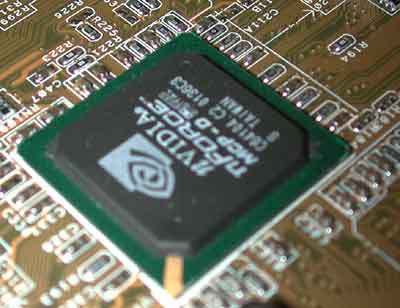
On the AMD side, ASUS has just released their KT266A solution and they are still working on their nForce based A7N266. There are two version of the board: the A7N266-E and the A7N266. The A7N266-E would be using the MCP-D and will not feature any other sound chips on the board since it'll already have the best on-board sound you can find.
The ASUS A7N266 has the regular MCP and also features an extra 6 channel audio processor on-board
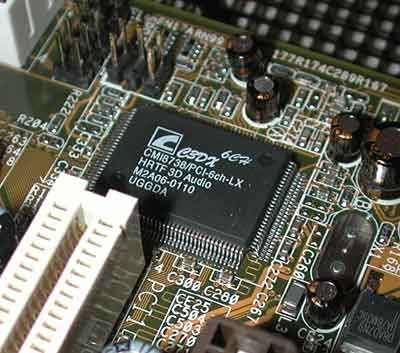
At the same time, the regular A7N266 uses the basic MCP which has the same audio core as the MCP-D without Dolby Digital encoding support. ASUS is using this as justification to offer an additional C-Media hardware sound chip on the board although we don't necessarily agree with their decision nor do we think it's necessary.
ASUS also had a 760MPX board on display which should be one of the first to hit the streets later this year.
DFI - Radeons for all
Just across from ABIT on the show floor you could find DFI's booth where they showcased the usual in terms of motherboards and their new video card line as well. On the motherboard side, they were displaying their new KT266A solution, the AD70-E. We have received the final version of the board it will be included in our upcoming roundup.
Another board that DFI showed us was their Intel 845 solution with DDR SDRAM support - the NB70. DFI said that they just need to put some finishing touches on the board and we should expect to receive the board in a few weeks.
Interesting enough, DFI is also going to start manufacturing ATI video cards. They already have the Radeon 7000, 7500, and 8500 ready and they should be out in the market soon. When asked why they chose ATI over NVIDIA, the response was because everyone else was making NVIDIA cards and they'd like to be different.
ECS - Pentium 4 Parade
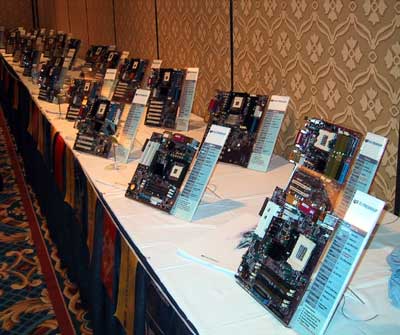
We were really surprised to see just how many different versions of Pentium 4 motherboards ECS had at the show. The following picture shows the whole lineup of boards they currently carry; it is worth noting that most of the motherboards in view are Pentium 4 solutions.
The P4IBAD is ECS's 845 DDR solution.
ECS also advertised their P4X266 motherboards, specifically the P4VXMD (micro-ATX) and P4VXAD (ATX). In spite of pressure from Intel, ECS will continue to ship P4X266 based solutions.
ECS also has a SiS 645 board - the P4S5A.
On the AMD side, ECS is already displaying their SiS 745 solution, the K7S6A. As we mentioned before, the SiS 745 chipset is basically the 735 chipset with DDR 333 support.
EPoX
EPoX will have a few new motherboards due out soon and we were able to take a look at couple of them. The EP-4BDA2 is their 845 DDR solution, supporting two DDR SDRAM DIMMs in accordance with Intel's spec for the chipset.
EPoX will also be releasing a new version of their KT266A motherboard called the EP-8KHA2. It has an added RAID controller and also a total of four DIMM slots instead of the three on the EP-8KHA+. We have yet to determine whether the board is stable with all slots populated, and whether there is a performance penalty seen in order to accommodate all four slots.
FIC - The Wireless Future
Moving on to the FIC suite, we were able to see some interesting motherboards as well as video cards. The first board that they introduced to us was the AT31, which uses the new ATI A3 chipset. A heavily delayed product, the A3 features an integrated RV200 core (we couldn't get official confirmation on this) and can use either an ALi or VIA South Bridge. The board is for AMD Socket-A processors including the Athlon XP and it features two DDR DIMM slots. Unlike NVIDIA's nForce the platform does not implement any particularly powerful audio codecs nor does it have a 128-bit DDR memory interface; just the standard 64-bit DDR solution is present here.
FIC will also be releasing the VC15 and VC35 soon, which are DDR 845 implementations.
Another DDR platform for the Pentium 4 is the VI35, which uses the SiS 645 chipset.
The AN11 uses the KT266A chipset and it also has an integrated Promise RAID controller.
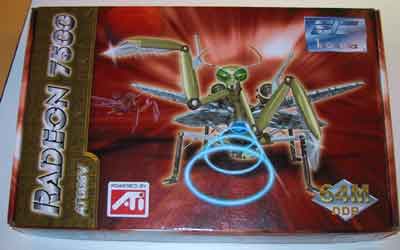
Just like DFI, FIC has also started making ATI video cards. If you'll remember we originally brought you pictures of ATI cards manufactured under the FIC brand back in June from Computex.
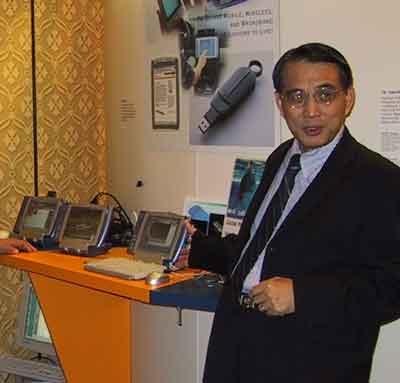
Aside from motherboards, FIC has also dedicated a lot of resources to their wireless products. We were honored to meet with Gene Sheu, the President of the Networking and Information Group of FIC; his team helped introduce all the new products to us.
The first product we looked at was the AquaPad; finally ready after over 2 years of development the AquaPad is a webpad that runs Windows CE on a Transmeta Crusoe TM5600 processor. Unfortunately the Windows CE v3.0 that's running on the AquaPad severely limits its functionality; the platform is in dire need of an upgrade to PocketPC 2002 although there are licensing limitations that will prevent that from happening anytime soon.
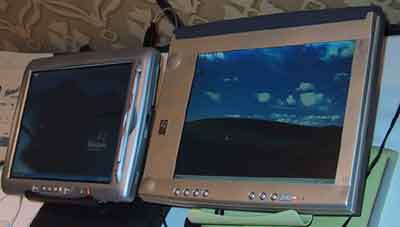
We also saw FIC's Tablet PC solution which is currently far from final production.
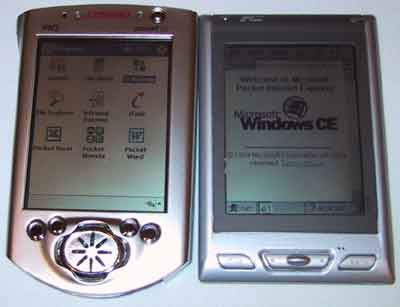

Compaq iPAQ (left) vs. FIC's pda (right)
Here you can see FIC's Windows CE based PDA next to a Compaq iPAQ. Like the Compaq iPAQ, FIC's solution is based off of a 206MHz StrongARM processor and 32MB of RAM; the only difference is that the FIC PDA is a lot thinner. Again the problem with this PDA is it is using an outdated version of Windows CE and not the much more useful PocketPC 2000/2002.
Gigabyte - The Real Surprise
Quite frankly, before visiting the Gigabyte booth we thought we had seen everything there was to show from motherboard manufacturers. And if we hadn't looked at one area of their suite in the illustrious Bellagio resort then we wouldn't have seen the most interesting motherboards of the entire show.
Of course Gigabyte had the usual; an array of Pentium 4 motherboards including a DDR 845 solution as well as a SiS 645 based motherboard (see below).
Gigabyte is still working on their nForce board - the GA-7NTX - but there is a chance that it wont be ready before the end of the year.
They also showed their KT266A board, the GA-7VTXH, which we expect to receive very soon for our roundup.
Gigabyte also manufactures NVIDIA video cards including those using the GeForce3 Ti500 and Ti200.
We were able to see the first 845 motherboard designed for a 1U chassis, the GA-8IDXR. It has special designed angled DIMM slots. It is also equipped with on-board SCSI and ATI Rage XL video.
We also saw Gigabyte's AMD 760MPX solution, the GA-7DPXDW. The motherboard boasts IDE RAID as its differentiating feature
Things started to get very interesting when we saw the GA-6MXDR, which is equipped with the Micron Copperhead chipset.
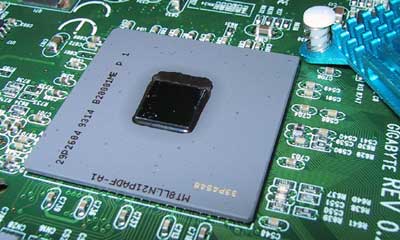
The Micron Copperhead North Bridge features a ceramic FC-BGA package
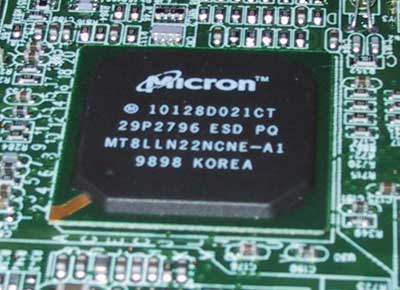
This South Bridge will most likely never see the light of day
You may remember the Micron Copperhead from over two years ago when it was destined to be one of the first chipsets to introduce the world to DDR SDRAM. Unfortunately delay after delay pushed the Copperhead back, and Gigabyte indicated to us that because the chipset is so incredibly late they will not mass produce this board. There is little demand for a high-bandwidth dual Pentium III solution since we already know that the Pentium III cannot take advantage of the extra memory bandwidth courtesy of its shared 133MHz FSB.
And finally, the most interesting board we came across was the GA-8IPXDR. The board uses the upcoming Intel Plumas chipset and is equipped with two Socket-603 interfaces for the Intel Xeon including the Prestonia (0.13-micron Xeon).
From left to right: Two Intel gigabit Ethernet controllers, 64-bit PCI-X controller, Plumas MCH
The Intel Plumas MCH features a dual channel DDR memory interface, meaning that 64-bit DDR SDRAM DIMMs must be installed in pairs on this board. The chipset only supports DDR200 however that could change between now and its release. Even with support for only DDR200 SDRAM the dual channel memory controller gives it 3.2GB/s which is equal to what a dual channel RDRAM memory controller would offer. The below diagram illustrates the various parts of a Plumas motherboard:
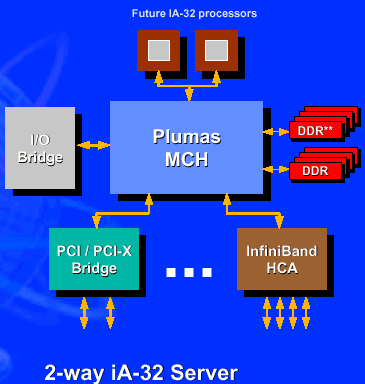
Iwill - A friend of ALi
They were the first to release a DDR Athlon motherboard based on the ailing ALi MAGiK1 chipset and they are showing continued support for the chipset with the XP333-R. Because of this Iwill won't be producing a KT266A based solution, instead they will wait until the release of VIA's KT333 and make a board based on that chipset instead.
MSI
Gigabyte wasn't the only one to have a Plumas based board in their suite. During our visit to MSI, we were able to see their upcoming Plumas board, the MS-9101. It features one infiniband, one PCI32, and three PCI64 slots on the board. It also has Intel's gigabit Ethernet controller integrated on the board as well.
MSI also had Intel 845 DDR and AMD 760MPX boards ready not to mention that we did see their SiS 645 solution up and running.
On the Athlon side of things, MSI had their KT266A and nForce boards on display. While their nForce solution is on the verge of being released, it still has some serious performance issues which has prevented us from publishing a review of the final board. MSI is working on fine tuning the BIOS for the mass-production version of the board.
MSI continues to manufacture video cards using the NVIDIA graphic chips. Shown here are their GeForce3 Ti500 and Ti200 cards.
Shuttle
Shuttle used to be a major player in the Super Socket 7 days however they have taken a quieter role with the emergence of many other Taiwanese manufacturers with more vivid focuses on overclocking, tweaking and additional features on-board. Recently Shuttle has been thrust back into the lime light with the release of their KT266A and P4X266 motherboards.
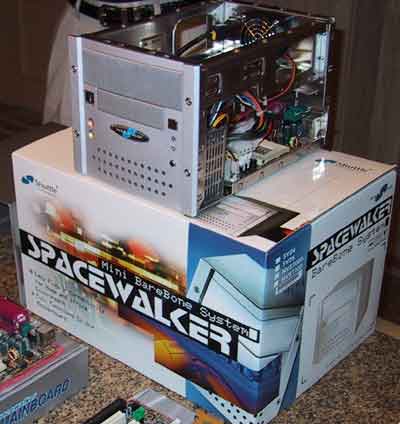
More importantly, Shuttle is also promoting their Spacewalker Mini Barebone System. As shown in the picture, the tiny box allows you to use either a Pentium III, Celeron or C3 processor, a maximum of two DIMMs of SDR SDRAM. The system is ideal for a Home Theater PC, Tivo or file server, where you don't need anything other than a DVD drive and a hard drive in it. The system also comes with a very small power supply so you can expect the system to be relatively quiet.
Soyo
At the Soyo suite, we were able to see some of their latest boards. The first one is the SY-P4I Fire Dragon, which uses the Intel 845 chipset with DDR SDRAM. It also has an integrated TI IEEE-1394/Firewire chip.
The second board we saw was the SY-P4S Dragon, which uses the SiS 645 chipset.
Tyan
Our last motherboard visit was to Tyan and we stumbled upon three boards of interest:
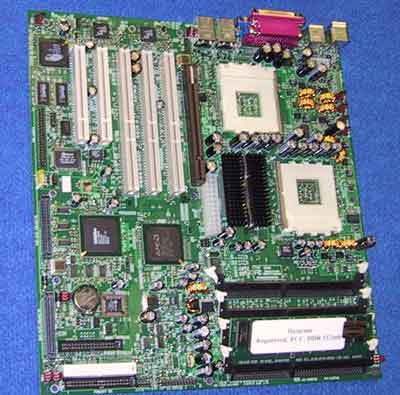
The first board is the Tyan Thunder K7X which is a derivative of the Thunder K7 except based on the AMD 760MPX chipset. Outside of the use of three 64-bit/66MHz PCI slots (instead of the 33MHz variety), the board is identical to the Thunder K7.
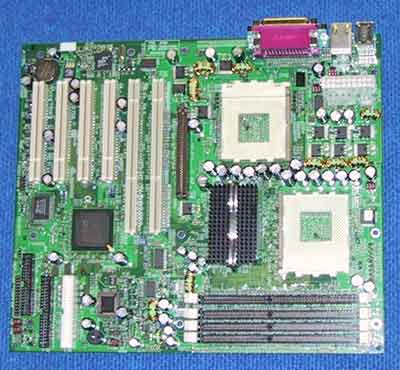
Next we have the Tiger MPX which is nothing more than the Tyan Tiger MP but based on the 760MPX chipset. The board now features two 64-bit/66MHz PCI slots courtesy of the new AMD 768 South Bridge.
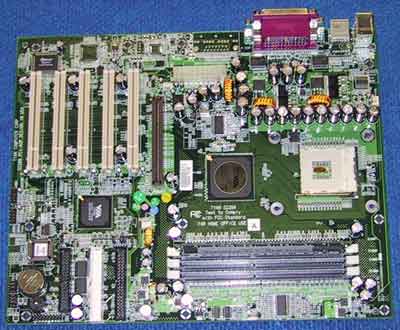
The most interesting board of all was Tyan's P4X266 based Pentium 4 board. If you know anything about Tyan's history you'll know that they have been very close to Intel, but this release seems like a very strange move for Tyan. With the majority of manufacturers backing off of the P4X266 release Tyan, of all the possible manufacturers, will be shipping a P4X266 board within the coming weeks. Is it a smart move for Tyan? With the SiS 645 chipset ready and Intel's DDR enabled 845 soon to arrive, we don't think so.
Final Words
The motherboard outlook for 2002 is definitely promising. With more chipsets for both Athlon and Pentium 4 platforms, the end user is bound to benefit.
For the Pentium 4 you can expect the 845 with DDR SDRAM to be the platform of choice for stability and mainstream performance. The SiS 645 will most likely assume the title of high-performing value chipset for the Pentium 4 although it seems like that majority of 645 boards won't arrive until after DDR 845 hits the streets.
For the Athlon it seems like the KT266A is still the most desirable chipset and although the nForce definitely has its own niche, VIA shouldn't be too worried about it cannibalizing their Athlon chipset sales; not yet at least. The next wave of Athlon chipsets will bring about DDR333 support however unless the Athlon gets a boost in FSB frequency, something that isn't on any AMD roadmaps we've seen, you shouldn't expect to gain any performance improvement from DDR333.
That pretty much summarizes the motherboard scene at this year's Comdex. We'll continue to provide coverage we gathered from the show as time goes on.

